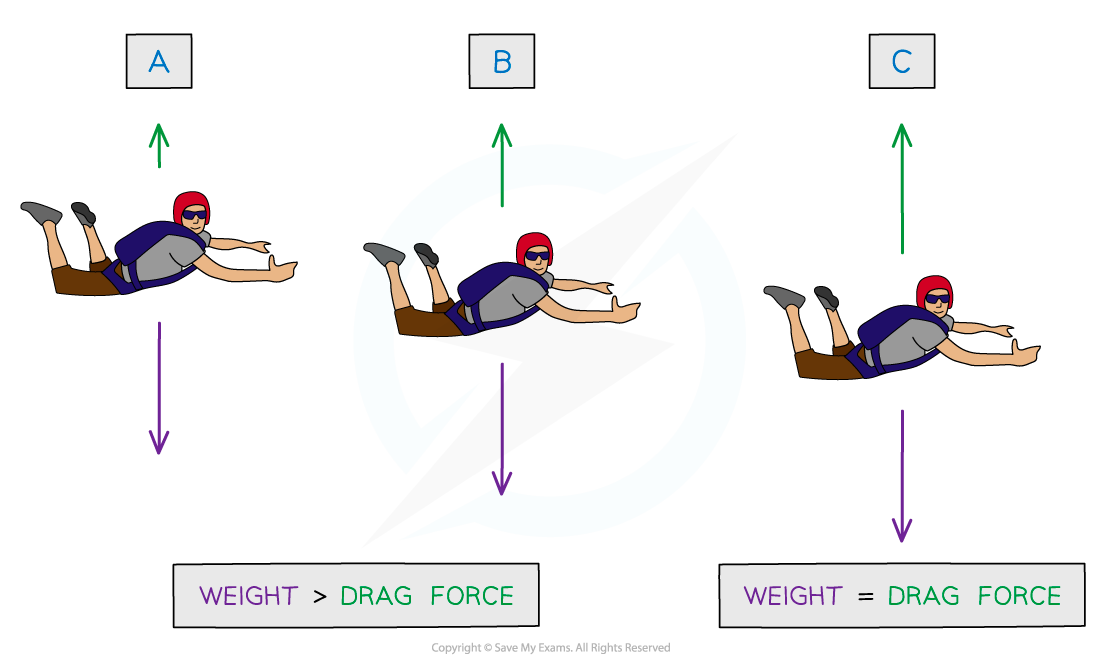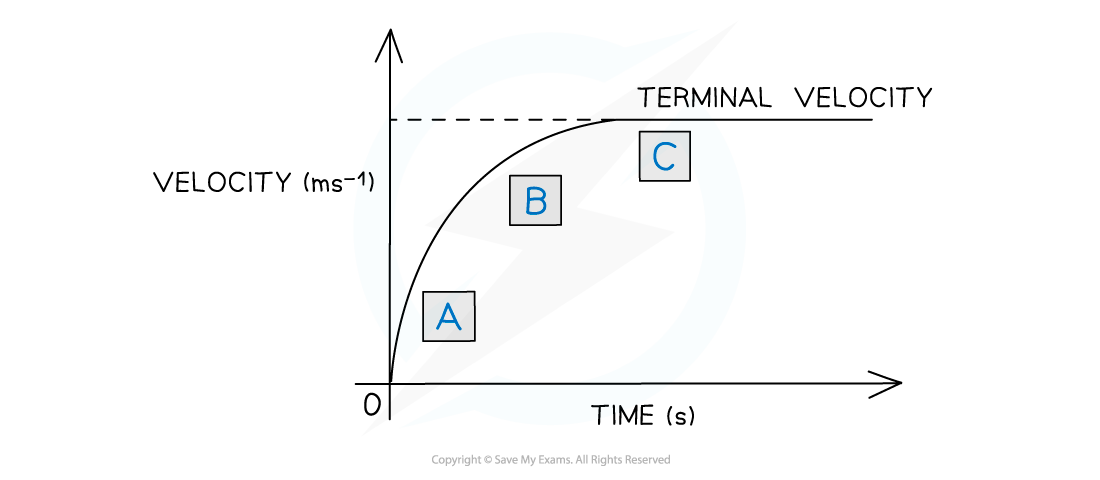Terminal Velocity (Cambridge (CIE) A Level Physics) : Revision Note
Terminal velocity
For a body in free fall with no effects of air resistance (for example, on the moon), the only force acting on it is weight
The resultant force is equal to weight
Therefore, the body accelerates at g, acceleration of free fall
For a body in free fall, when air resistance is a factor (for example on Earth):
Weight is greater than air resistance, so the resultant force is in the direction of motion
The body accelerates according to Newton's second law, F = ma
As the velocity increases, the drag force increases
The resultant force decreases, therefore the acceleration decreases
When the drag force equals weight, the resultant force is zero
The body falls at a constant velocity called terminal velocity
Terminal velocity is the maximum velocity the body can reach
The stages of a skydiver reaching terminal velocity


As the velocity of the skydiver increases, the drag force due to air resistance also increases, until the skydiver can no longer accelerate and a maximum, terminal velocity is reached
Graph of the stages of the skydiver reaching terminal velocity

The gradient decreases with time, showing that acceleration decreases with time until terminal velocity is reached and acceleration reaches zero
The graph shows how the velocity of the skydiver varies with time
Since the acceleration is equal to the gradient of a velocity-time graph, the acceleration decreases and eventually becomes zero when terminal velocity is reached
Worked Example
Skydivers A and B jump out of a plane at intervals of a few seconds. The mass of Skydiver A is greater than the mass of Skydiver B. Skydivers A and B want to join up as they fall.
Explain who should jump first, in order for them to meet up as they fall.

Answer:
Step 1: Determine which skydiver will have the greatest terminal velocity
Skydiver A has a greater mass
Because F = ma, Skydiver A also has a greater force of weight acting on them
Since terminal velocity is reached when air resistance equals weight, Skydiver A will have a greater terminal velocity
Step 2: Determine who should jump first
Skydiver A has a greater terminal velocity and will therefore fall at a greater speed
In order for Skydiver B to catch up to Skydiver A during the fall, Skydiver B needs to jump first
Examiner Tips and Tricks
Exam questions about terminal velocity tend to involve the motion of skydivers as they fall
A common misconception is that skydivers move upwards when their parachutes are deployed - however, this is not the case, they are in fact decelerating to a lower terminal velocity

You've read 0 of your 5 free revision notes this week
Unlock more, it's free!
Did this page help you?

